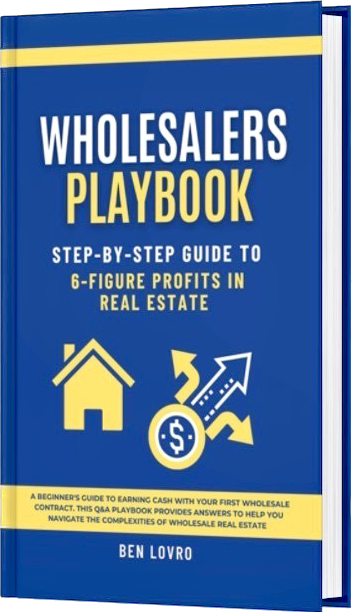FREE WHOLESALING COURSE
Get The Exact Blueprint To Launch And Grow A Successful Real Estate Wholesaling Business


Top Real Estate Wholesaler Websites
Introduction
If you've ever wondered how hedge funds keep score in the world of finance, you're in for a treat. Imagine a game of baseball, but instead of runs and hits, hedge funds use performance metrics to see how well they're doing.
What Are Hedge Funds, Anyway?
Before we dive into performance metrics, let's quickly recap what hedge funds are. Think of them as teams of money experts who gather cash from many people (investors) and use their financial superpowers to grow that money. They invest in different things like stocks, bonds, and other assets, aiming to make more money for their investors.
Metric #1: Return on Investment (ROI)
ROI is like the home runs in our baseball analogy. It tells us how much money the hedge fund made compared to how much they invested.
Let's say you invested $100, and after a year, your investment grew to $120. The ROI would be 20% because you made $20 on your $100 investment. Hedge funds use this metric to see if they're hitting financial home runs.
Metric #2: Alpha
Alpha measures how well a hedge fund performs compared to the general market. It's like checking if your favorite baseball team is better than the average team. A positive alpha means the hedge fund is outperforming the market, while a negative alpha means it's underperforming. Just like cheering for your team, investors cheer for positive alphas.
Metric #3: Beta
In the world of websites, "beta" is a bit like saying, "Hey, we're still testing things." It's like when a chef tastes the soup before serving it to make sure it's just right.
A beta version of a website means it's not the final, polished version yet. There might be some kinks or bugs that need to be worked out.
But don't worry, it's a normal part of the process. It's like when you practice your basketball shots before the big game – you want everything to be perfect when it counts. So, when you see "beta" on a website, it just means they're making sure everything runs smoothly before the grand opening.
Metric #4: Standard Deviation
Standard deviation might sound complicated, but it's like a tool that helps us understand how spread out numbers are in a group. Imagine you have a bunch of test scores. If everyone gets almost the same score, the standard deviation is low because the numbers are close together. But if some scores are really high and some really low, the standard deviation is high because the numbers are all over the place.
It's like checking if your friends all live close to each other or if they're spread out across the city. Standard deviation helps us see how much the numbers "deviate" or spread out from the average, giving us a clearer picture of the data.
Metric #5: Sharpe Ratio
The Sharpe Ratio is like a measuring tool for investments. It helps you figure out if an investment is worth the risk.
Imagine you have two options for a school project. One option is to do something you're really good at, and the other is something new and challenging. The Sharpe Ratio would help you decide which one is better. It looks at how much extra reward you can get for taking on extra risk.
In the investment world, this ratio helps people choose between safe and risky investments. If an investment has a high Sharpe Ratio, it means you might get a good reward for the risk you're taking. It's like saying, "Is it worth trying that challenging school project if it could bring big rewards?"
Metric #6: Maximum Drawdown
Maximum drawdown is like the deepest dip on a roller coaster ride. When you invest in stocks, it's essential to know that the value of your investment can go up and down. The maximum drawdown is the biggest drop your investment takes from its highest point before it starts climbing again.
Imagine you put your money in a roller coaster, and it goes up to the highest point and then suddenly drops down. The maximum drawdown tells you how far it fell before going back up. It's crucial to understand this because it helps you assess the risk of your investment.
The smaller the maximum drawdown, the steadier your ride, like a gentle slope. But if it's a big drop, it's like a wild roller coaster, and you need to be prepared for the ride.
Metric #7: Assets Under Management (AUM)
Assets under management, often abbreviated as AUM, is a term you might come across when dealing with finances. Think of it as a measure of how much money a company or individual is responsible for managing. It's like if you had a piggy bank, and you asked someone to take care of it for you. The total amount of money inside that piggy bank would be your "assets under management."
For businesses, especially in the world of finance, AUM is a big deal because it shows how much trust people have in them to handle their money. The higher the AUM, the more money they're managing, and that usually means they're doing a good job. It's like a report card for financial companies, telling everyone how well they're doing at taking care of other people's money.
Metric #8: Management Fees
Management fees are like the cost you pay for someone to help take care of things. Imagine having a team of experts who look after your real estate deals, making sure everything runs smoothly.
Well, those experts need to get paid for their hard work, and that's where management fees come in. These fees cover the cost of their services, like finding great properties, dealing with paperwork, and making sure all the details are in order. So, when you see management fees, think of it as the price you pay for a trusted team to handle the nitty-gritty stuff, so you can focus on what you do best in the world of real estate wholesaling.
Metric #9: High Water Mark
The "High Water Mark" in real estate wholesaling is a bit like reaching the top of a roller coaster ride. It's the point where you've made the most profit on a property, and things start to level out.
Imagine you bought a house for a low price, made some smart decisions, and then sold it for a fantastic profit—that's your high water mark! It's a moment to celebrate because you've reached your peak earnings on that deal. After that, it might take some time and effort to find another opportunity that can top it. But in wholesaling, the thrill is in the chase for that next high water mark, and with dedication and savvy deals, you'll keep climbing to new heights in your real estate adventure.
Conclusion
So, there you have it, our guide to hedge fund performance metrics, explained just like your favorite sports stats. These metrics help investors understand how hedge funds are performing and whether they're hitting financial home runs or striking out. Remember, just like in baseball, there are no guarantees in investing, but understanding these metrics can help you make informed decisions when it comes to your money.

Search Blog
Year
Month



